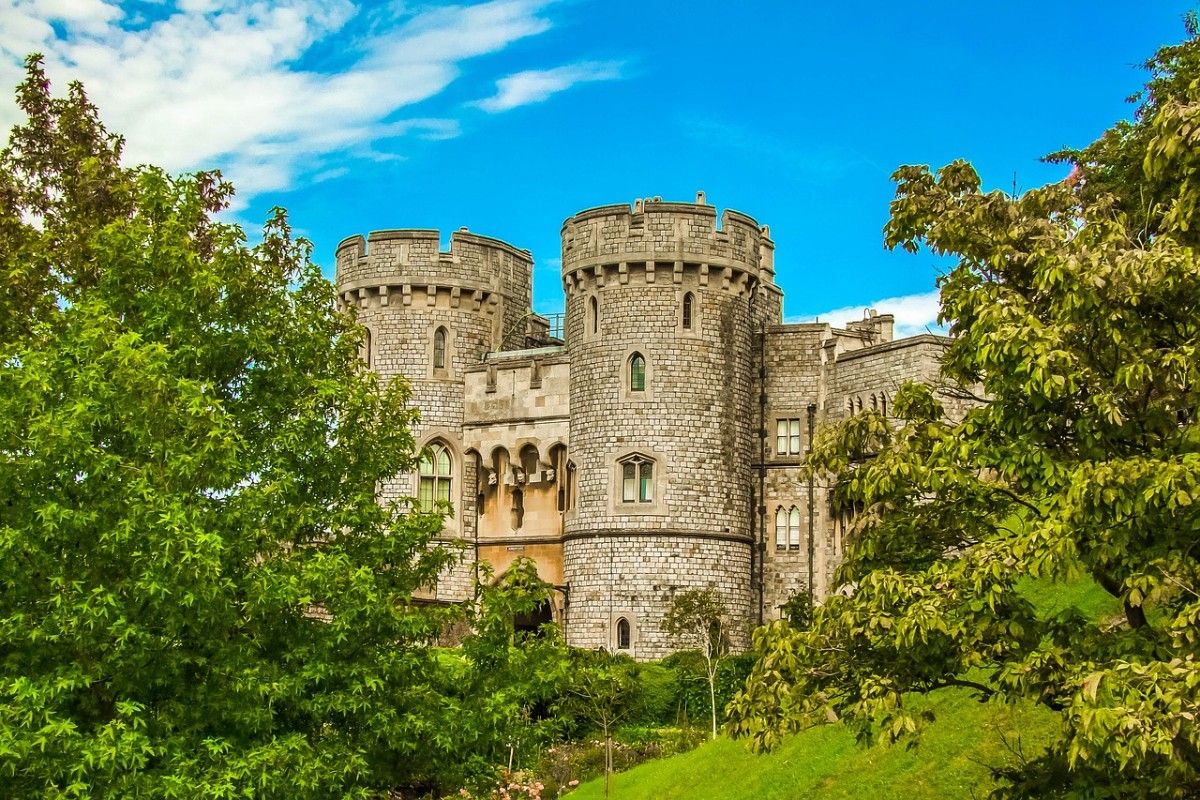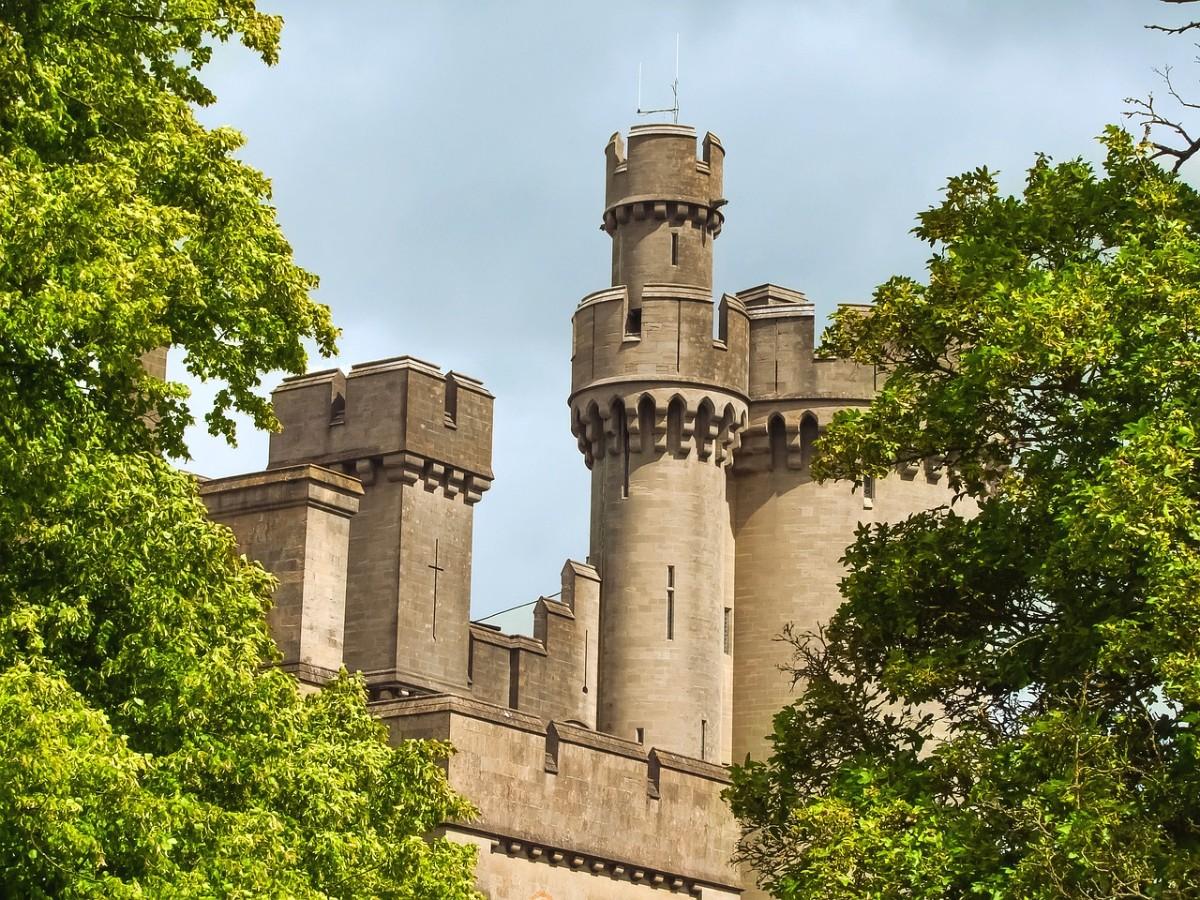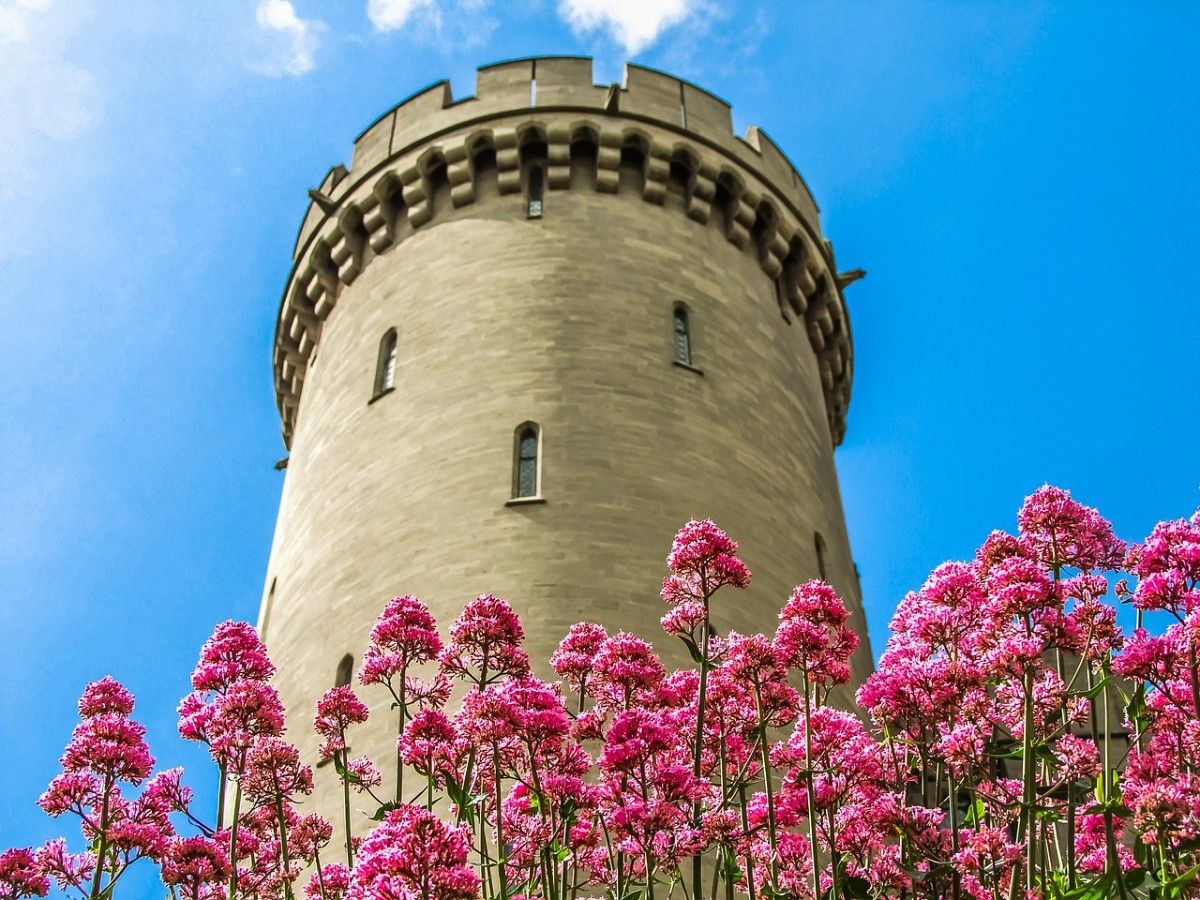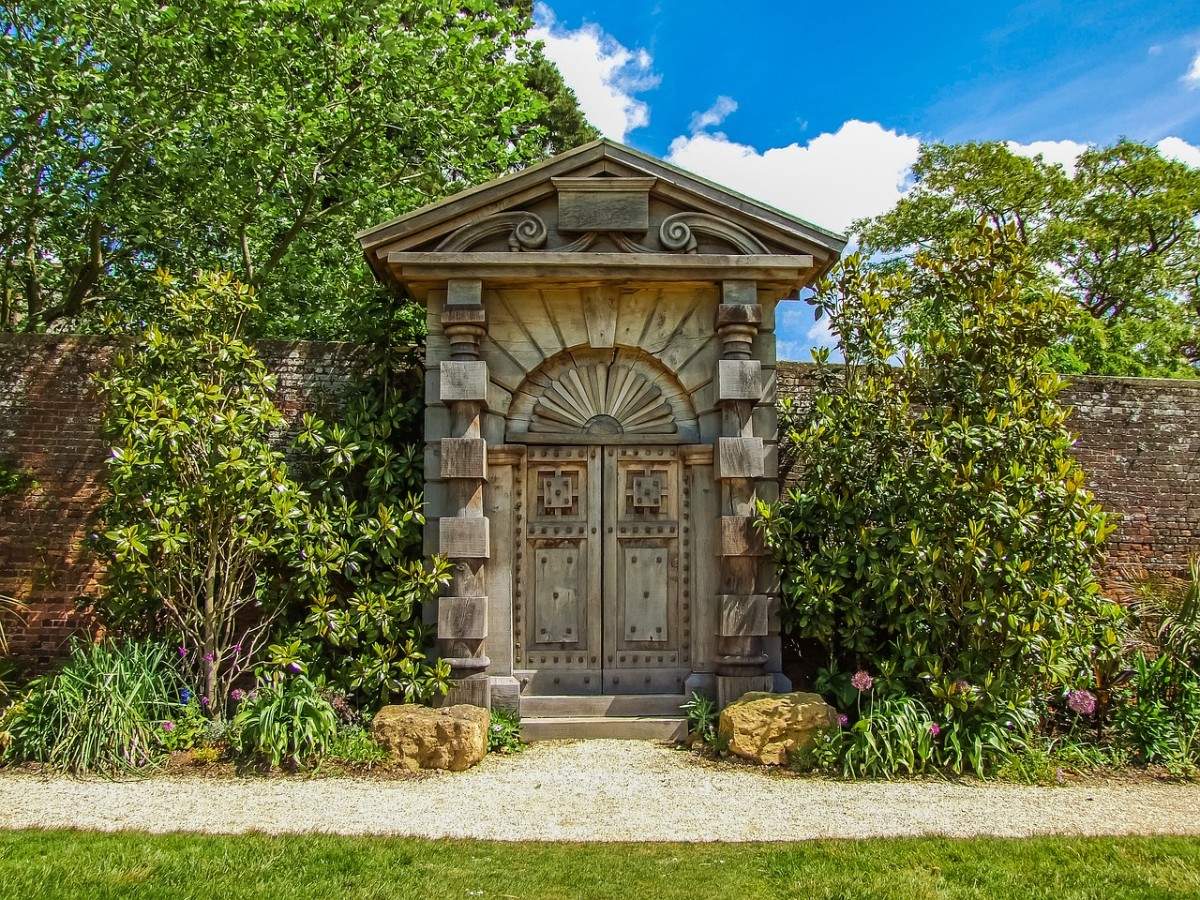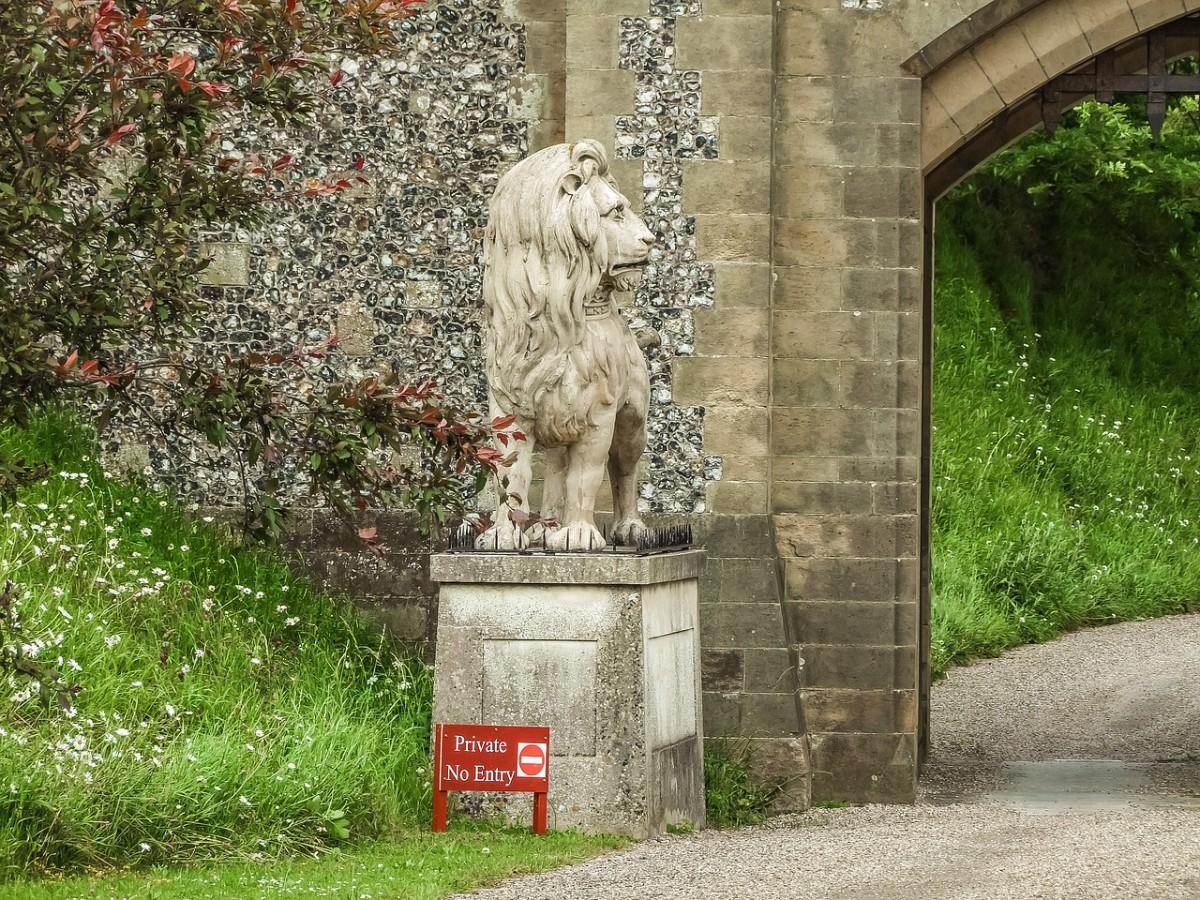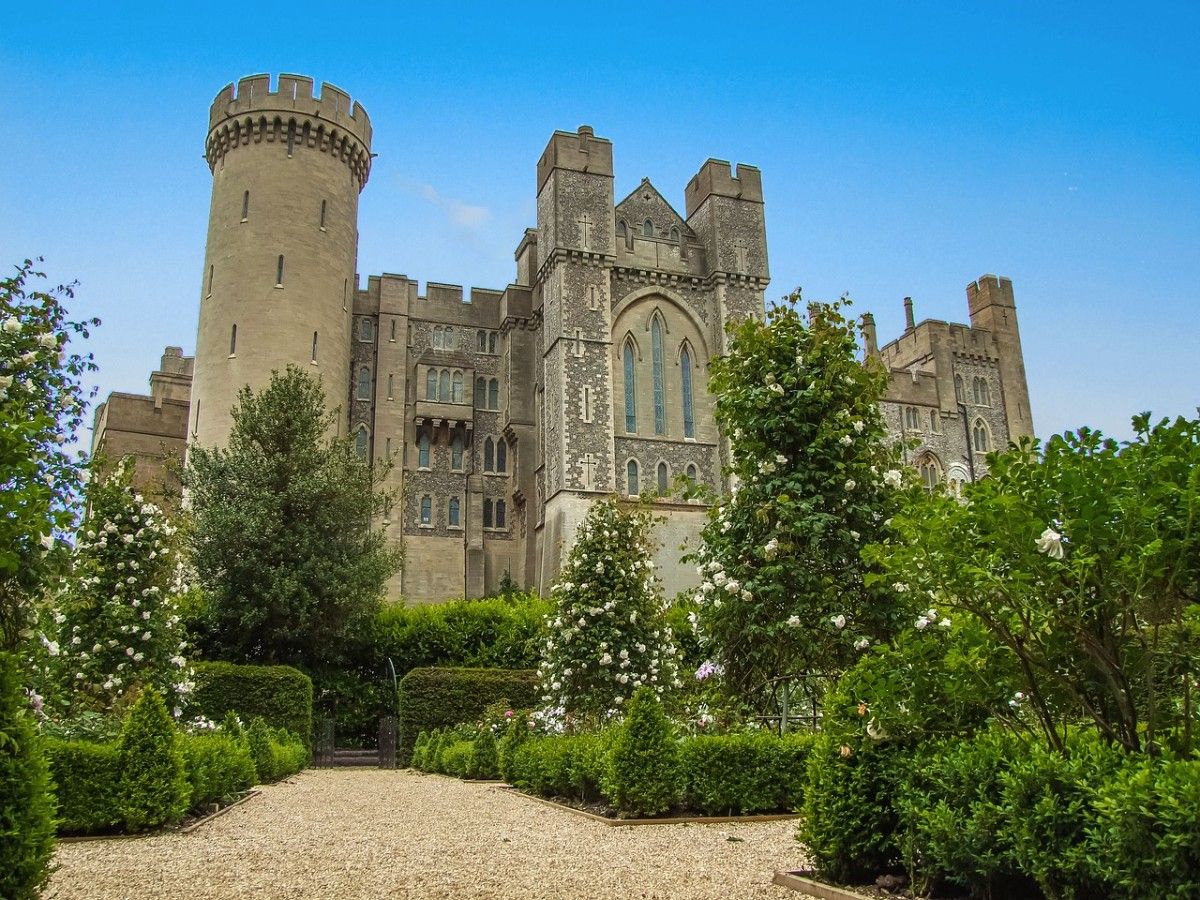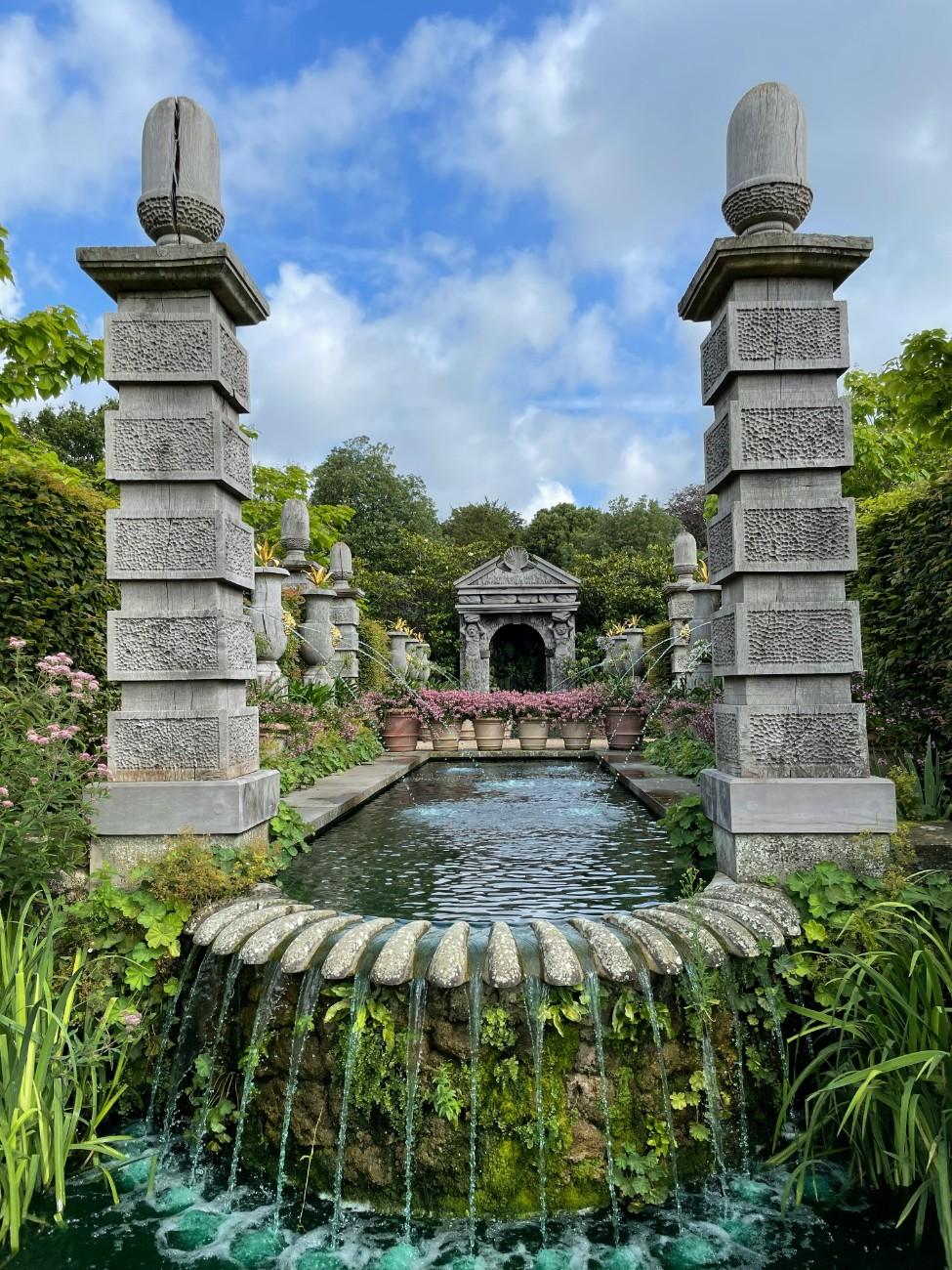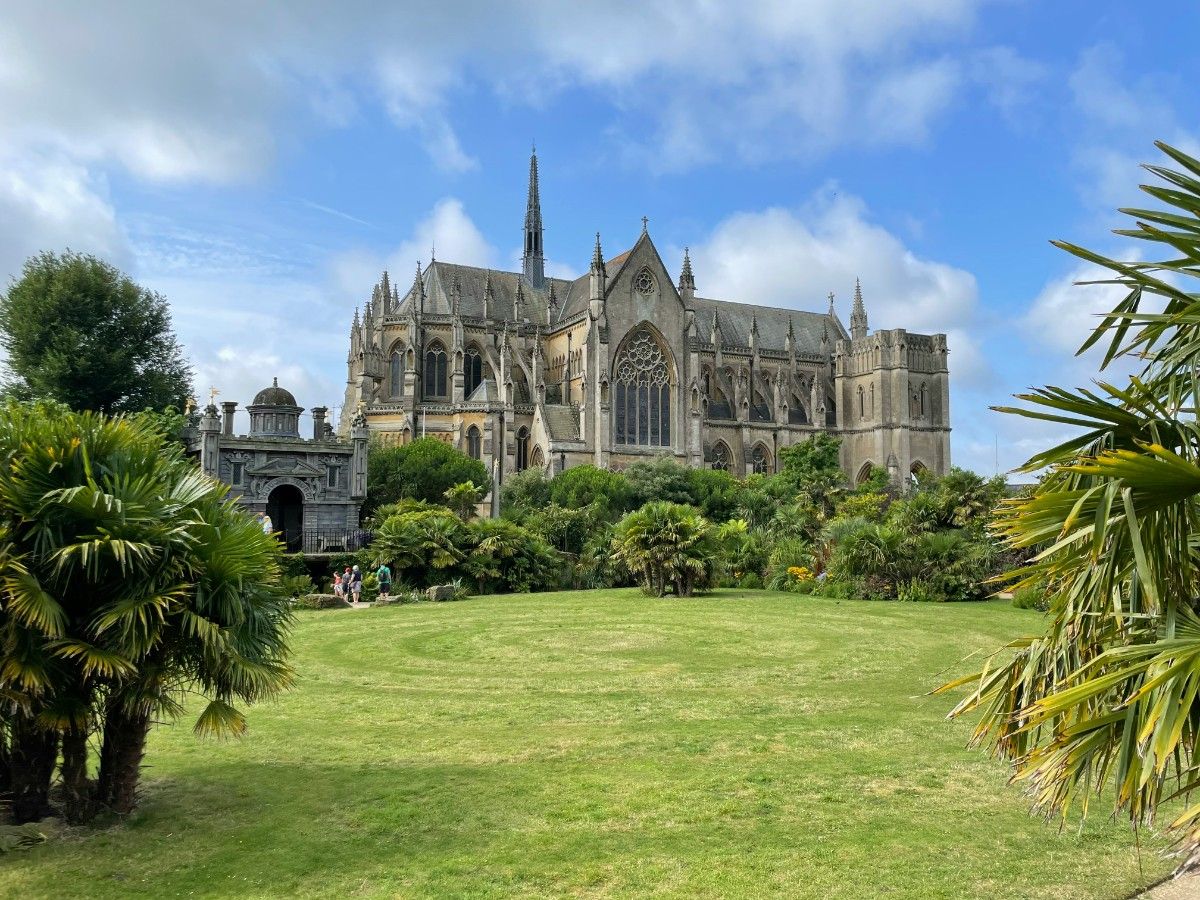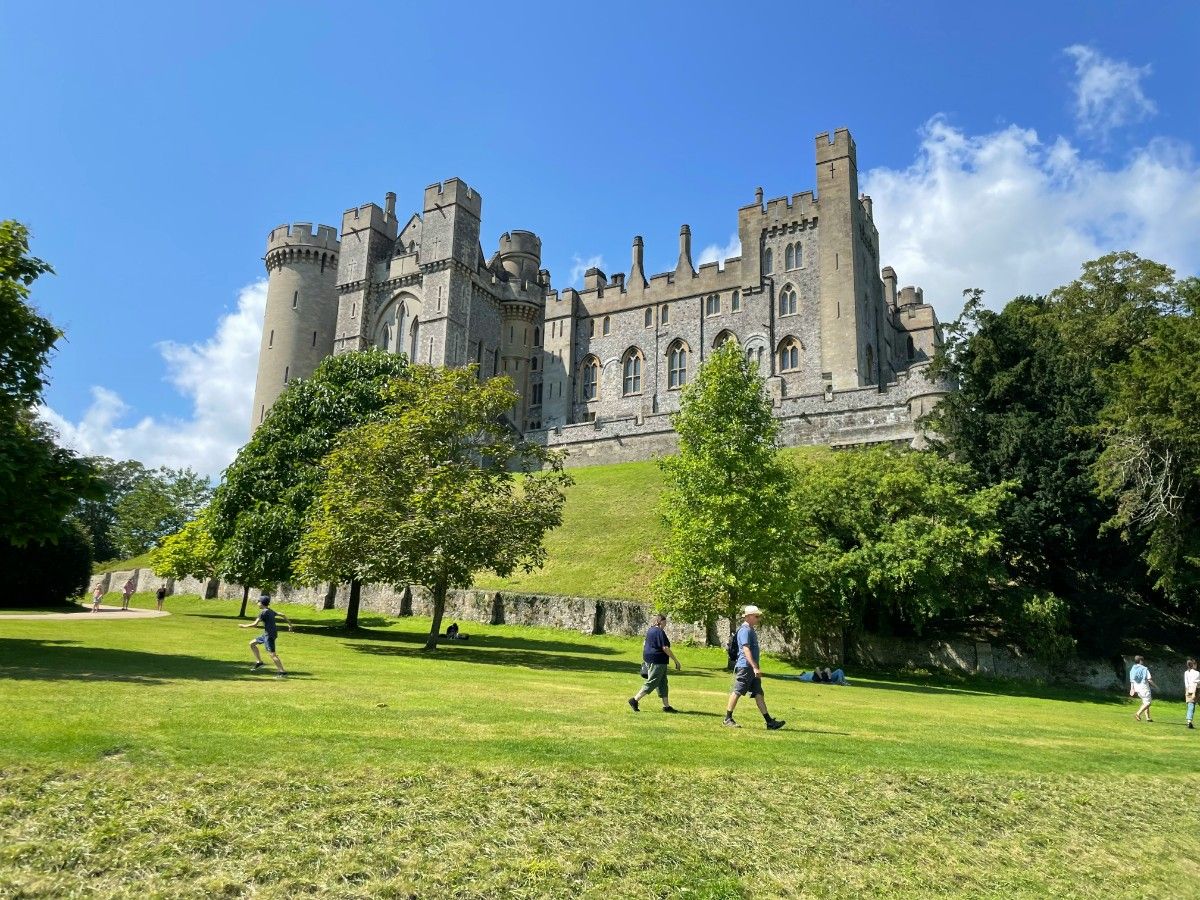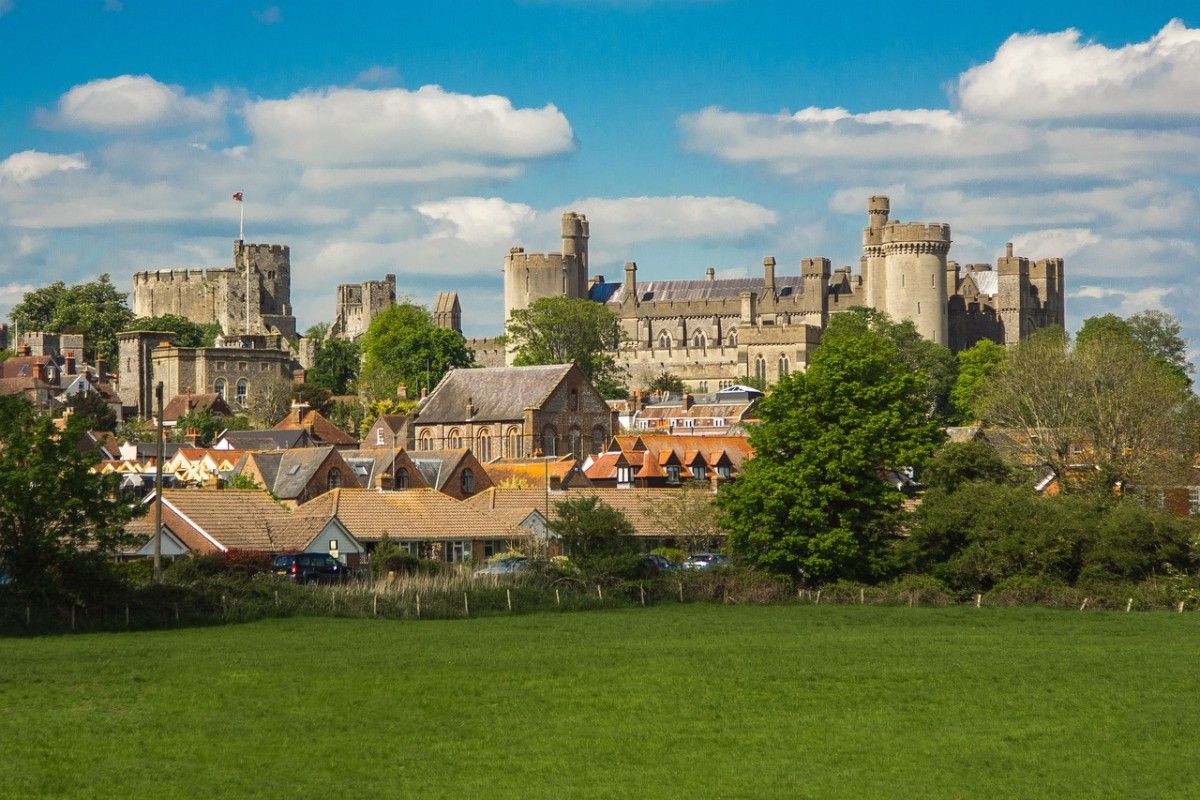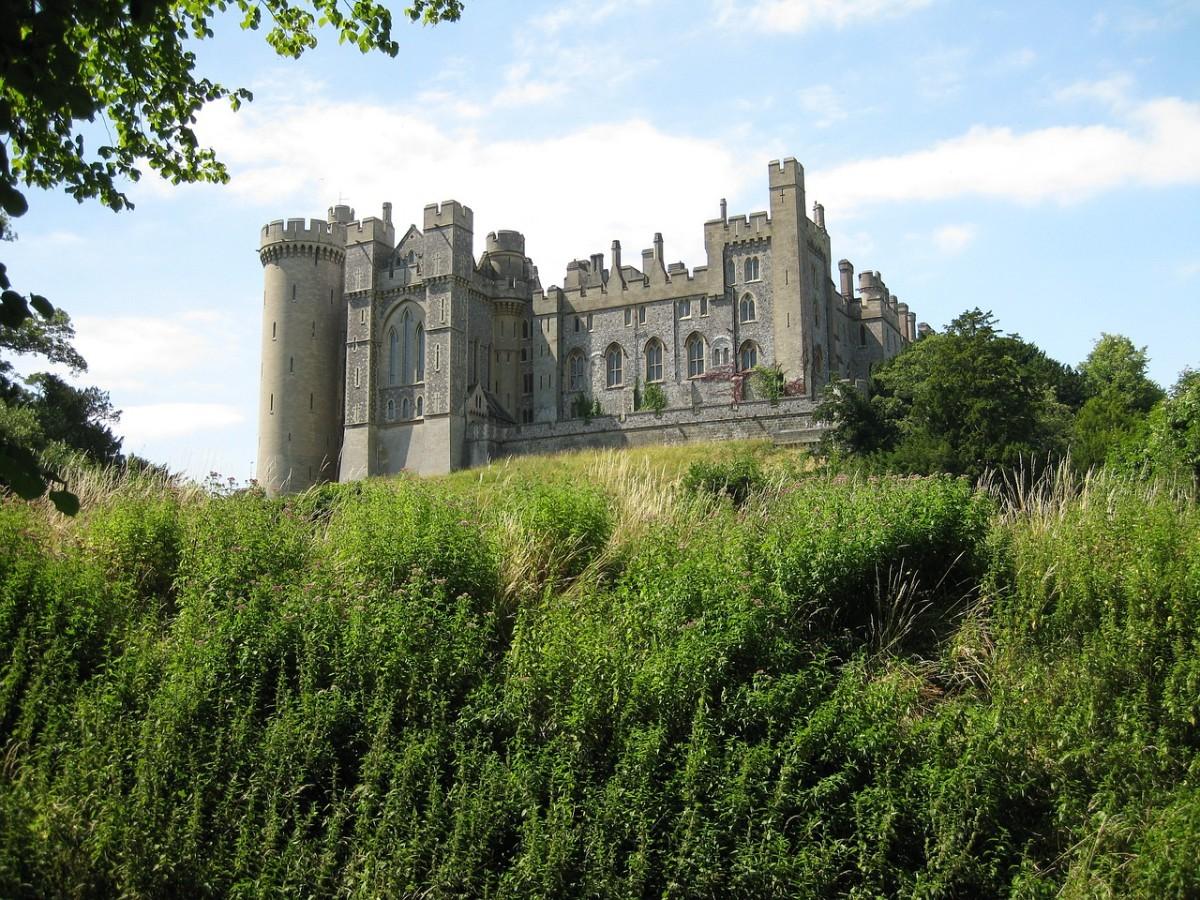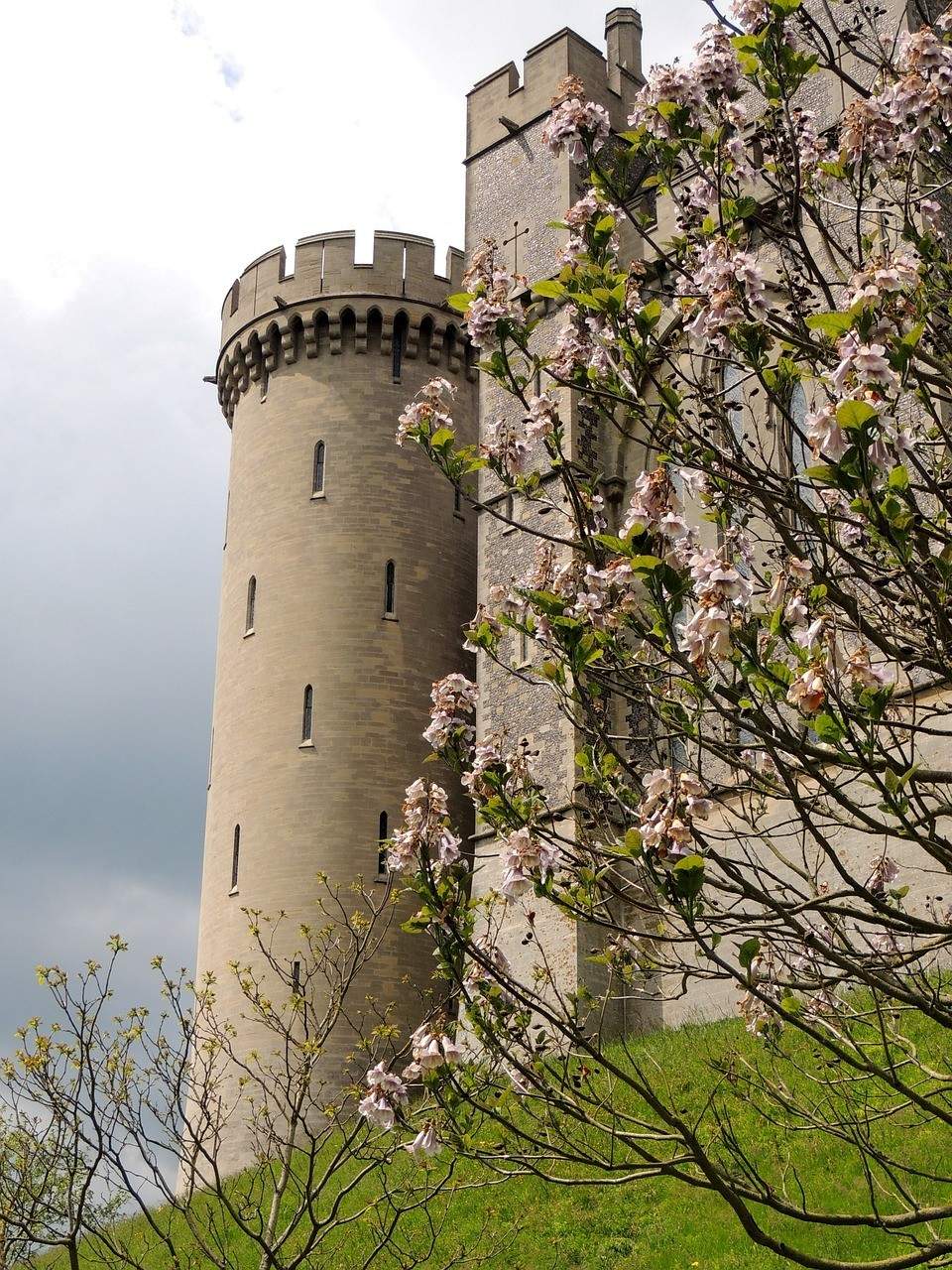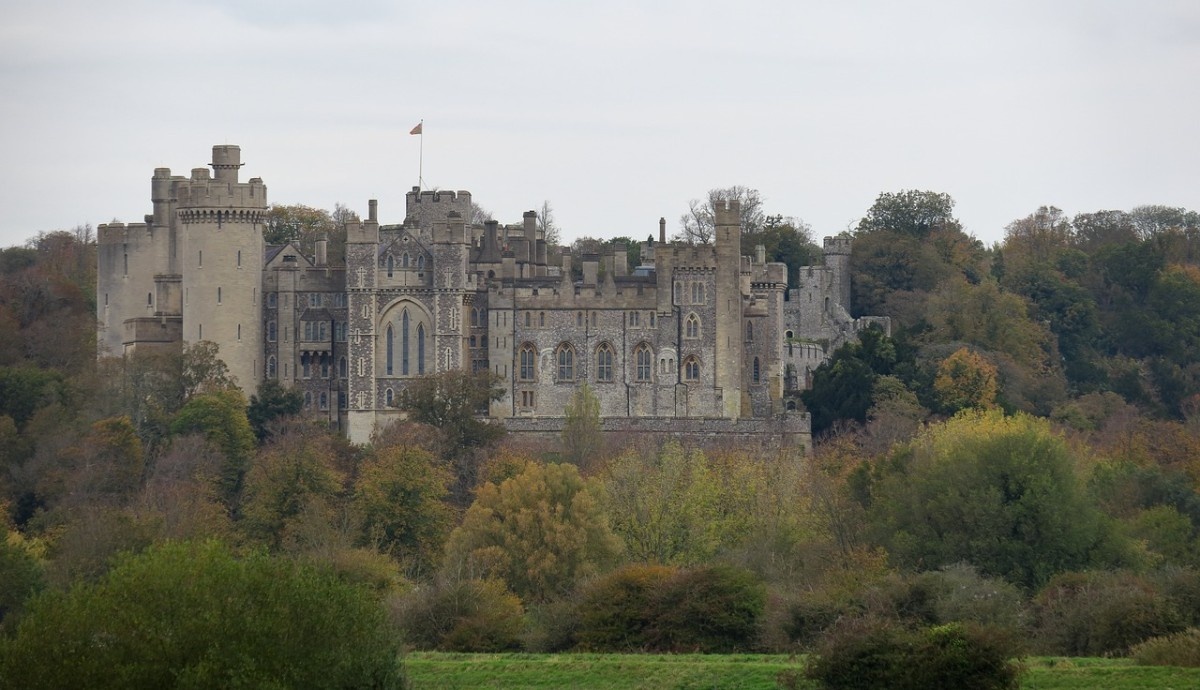The Timeless Allure of Arundel Castle
A Majestic Fortress Overlooking the River Arun
Nestled in the picturesque town of Arundel in West Sussex, England, Arundel Castle stands as a testament to the rich history and architectural brilliance of the United Kingdom. This magnificent castle has captivated visitors for centuries, offering a glimpse into the lives of nobility and the events that shaped British history. As you approach the castle, its imposing walls and towers rise majestically above the surrounding landscape, creating an awe-inspiring sight that transports you back in time.
The castle's strategic location on a hill overlooking the River Arun has played a crucial role in its long and storied history. From this vantage point, the castle's defenders could easily spot potential threats and prepare for battle. Today, visitors can enjoy stunning views of the river and the surrounding countryside from the castle's ramparts and towers, taking in the same breathtaking vistas that have inspired countless artists and writers over the centuries.
Preservation and Restoration: Maintaining the Castle's Grandeur
One of the most striking features of Arundel Castle is its remarkable state of preservation. Despite its ancient origins, the castle has been meticulously maintained and restored over the years, allowing visitors to experience its grandeur much as it would have been centuries ago. The castle's exterior is a stunning example of medieval architecture, with its crenelated walls, soaring towers, and imposing gateway. As you cross the drawbridge and pass through the portcullis, you can almost hear the echoes of history whispering in the air.
The preservation and restoration of Arundel Castle have been ongoing processes, with each generation of owners contributing to the castle's upkeep and improvement. From the 11th century to the present day, the castle has undergone numerous renovations and additions, reflecting the changing tastes and needs of its inhabitants. Today, the castle is a testament to the dedication and skill of the many architects, craftsmen, and conservators who have worked tirelessly to maintain its beauty and integrity.
Timeless Beauty and Historical Significance
Arundel Castle's timeless allure lies not only in its physical structure but also in the stories and legends that have become intertwined with its history. The castle has been the backdrop for countless historical events, from royal visits and political intrigues to great feasts and tournaments. Walking through its halls and chambers, you can almost feel the presence of the great figures who once called this place home, from the powerful dukes and earls to the kings and queens who graced its courts.
The castle's historical significance extends beyond its role as a residence for the nobility. It has also played a crucial role in shaping the course of British history, serving as a stronghold during times of war and a centre of power and influence during times of peace. Today, visitors to Arundel Castle can explore this rich history through a variety of exhibits, guided tours, and interactive displays, gaining a deeper understanding of the castle's place in the larger story of England.
Unveiling the Fascinating History of Arundel Castle
The Norman Conquest and the Birth of Arundel Castle
The story of Arundel Castle begins in the aftermath of the Norman Conquest of England in 1066. Following his victory at the Battle of Hastings, William the Conqueror rewarded his loyal followers with lands and titles throughout his newly conquered kingdom. One of these followers was Roger de Montgomery, a cousin of William's, who was granted the earldom of Arundel and the surrounding lands.
It was Roger de Montgomery who began the construction of Arundel Castle in 1067, building a motte-and-bailey castle on a strategic hill overlooking the River Arun. This early castle would have been a relatively simple structure, consisting of a wooden keep atop an artificial mound, surrounded by a courtyard and a wooden palisade. Despite its basic design, the castle served as a powerful symbol of Norman rule and a base from which the new earl could control his lands and subjects.
The Castle's Evolution Through the Centuries
Over the centuries, Arundel Castle underwent numerous expansions and renovations, reflecting the changing needs and tastes of its successive owners. In the 12th century, the wooden keep was replaced with a stone one, and the castle's defences were strengthened with the addition of a curtain wall and gatehouse. During the 13th and 14th centuries, the castle played a crucial role in the conflicts between the English crown and the powerful barons, with Arundel serving as a key stronghold for the monarchists.
One of the most significant periods in Arundel Castle's history was the 16th century when it came into the possession of the Fitzalan family, the Earls of Arundel. The Fitzalans were devout Catholics, and during the tumultuous years of the English Reformation, the castle became a centre of Catholic resistance. The 4th Earl of Arundel, Philip Howard, was imprisoned in the Tower of London for his faith and died there in 1595, becoming a Catholic martyr.
The Howards and the Dukes of Norfolk
In the centuries that followed, Arundel Castle continued to play a role in the political and social life of England. During the English Civil War in the 17th century, the castle was besieged and damaged by Parliamentary forces, but it was later restored by the Howard family, who had inherited the earldom of Arundel. The Howards, who later became the Dukes of Norfolk, have owned the castle since the 16th century, and their influence can be seen throughout the castle's architecture and décor.
Under the Howards, Arundel Castle underwent extensive renovations and additions, transforming it into a grand Victorian palace that blended medieval and modern styles. Today, the castle is still owned by the Duke of Norfolk, the premier duke in the peerage of England and the titular head of the Howard family. The Dukes of Norfolk have been instrumental in preserving the castle's rich history and ensuring that it remains a vital part of England's cultural heritage.
A Living Testament to England's Rich History
Today, Arundel Castle is open to the public, offering visitors a fascinating glimpse into its long and storied history. From the ancient Norman keep to the grand Victorian interiors, every corner of the castle has a story to tell, a tale of power, faith, and the enduring legacy of one of England's greatest castles. As you explore its halls and chambers, you can't help but feel a sense of awe and reverence for the countless generations who have called this place home and the events that have shaped the course of British history.
Arundel Castle is more than just a historic building; it is a living testament to the rich and complex history of England itself. Its walls have witnessed the rise and fall of kings and queens, the clashes of armies, and the struggles of religious and political ideologies. By exploring the castle and its grounds, visitors can gain a deeper understanding and appreciation of the forces that have shaped the nation we know today.
Exploring the Architectural Marvels of Arundel Castle
The Norman Keep: A Testament to Medieval Fortification
At the heart of Arundel Castle stands the impressive Norman keep, a testament to the castle's origins as a medieval fortification. Built in the 12th century to replace the original wooden keep, this stone tower has stood the test of time, surviving sieges, wars, and the ravages of the elements. The keep's massive walls, some 12 feet thick in places, and its imposing height of nearly 100 feet, serve as a reminder of the castle's primary function as a stronghold and a symbol of power.
Visitors to Arundel Castle can explore the keep's interior, climbing the narrow, winding stairs to reach the top of the tower. From this vantage point, one can enjoy breathtaking views of the surrounding countryside and the River Arun below. The keep also houses a fascinating collection of medieval artifacts, including arms and armour, tapestries, and furniture, providing a glimpse into the daily lives of the castle's inhabitants during the Middle Ages.
The Gothic Revival: Victorian Grandeur and Opulence
In the 19th century, Arundel Castle underwent a significant transformation under the guidance of the 15th Duke of Norfolk, Henry Fitzalan-Howard. The Duke, a passionate admirer of Gothic architecture, commissioned extensive renovations and additions to the castle, seeking to blend its medieval heritage with the grandeur and opulence of the Victorian era.
The result is a stunning example of Gothic Revival architecture, characterized by its intricate stonework, soaring arches, and ornate decorative elements. The castle's interiors were also updated during this period, with lavish furnishings, rich tapestries, and exquisite works of art adorning the walls and halls. The Duke's influence can be seen throughout the castle, from the magnificent Baron's Hall to the sumptuous drawing rooms and bedchambers.
The Fitzalan Chapel: A Masterpiece of Gothic Architecture
One of the most striking architectural features of Arundel Castle is the Fitzalan Chapel, a beautiful example of Gothic architecture and a testament to the castle's long and complex religious history. Built in the 14th century and extensively remodelled in the 19th century, the chapel serves as the final resting place for many of the Fitzalan and Howard family members.
The chapel's interior is a masterpiece of Gothic design, with soaring vaulted ceilings, intricate stone carvings, and stunning stained glass windows. The windows, created by the renowned Victorian glassmaker Thomas Willement, depict scenes from the life of the Virgin Mary and the history of the Fitzalan and Howard families. The chapel's atmosphere is one of serenity and reverence, inviting visitors to contemplate the castle's rich spiritual heritage.
The Castle Grounds: A Blend of Medieval and Modern
Beyond the castle walls, the grounds of Arundel Castle offer a fascinating blend of medieval and modern architecture. The castle's gardens, redesigned in the 20th century by the Duchess of Norfolk, Lavinia Fitzalan-Howard, feature a series of terraces, fountains, and flower beds, creating a stunning visual contrast with the castle's ancient stone walls.
Other notable architectural features of the castle grounds include the Victorian glasshouses, which house a collection of exotic plants and flowers, and the medieval-style jousting arena, where visitors can witness thrilling reenactments of knightly tournaments. The grounds also offer a variety of walking trails and picnic areas, allowing visitors to enjoy the beauty and tranquillity of this historic setting at their own pace.
Discovering the Enchanting Gardens of Arundel Castle
The Collector Earl's Garden: A Horticultural Masterpiece
One of the most enchanting features of Arundel Castle is the Collector Earl's Garden, a stunning example of horticultural artistry and design. Created in 2008 by the Duchess of Norfolk, Georgina Fitzalan-Howard, the garden is a tribute to the 14th Earl of Arundel, known as the "Collector Earl" for his passion for art and antiquities.
The garden's design is inspired by the works of Inigo Jones, the renowned 17th-century English architect, and features a series of geometric flower beds, elegant fountains, and stone pavilions. The planting scheme is a masterpiece of colour and texture, with a carefully curated selection of flowers, shrubs, and trees that provide year-round interest and beauty.
The Stumpery: A Victorian Revival
Another fascinating feature of the Arundel Castle gardens is the Stumpery, a unique and whimsical garden design that was popular during the Victorian era. The Stumpery at Arundel was created in 2004 by the Duchess of Norfolk, using the remnants of an ancient oak tree that had fallen on the castle grounds.
The Stumpery's design is characterized by a series of upturned tree stumps and roots, arranged in a naturalistic and sculptural manner to create a sense of mystery and enchantment. The stumps are planted with a variety of ferns, mosses, and other shade-loving plants, creating a lush and verdant atmosphere that transports visitors to a fairy-tale world.
The Rose Garden: A Fragrant Oasis
One of the most beloved features of the Arundel Castle gardens is the Rose Garden, a fragrant oasis that showcases a stunning collection of over 150 varieties of roses. The garden's design is inspired by the classic English rose garden, with a series of circular beds arranged around a central fountain.
The roses in the garden have been carefully selected for their beauty, fragrance, and historical significance, with many varieties dating back to the medieval and Tudor periods. Visitors to the Rose Garden can enjoy a peaceful stroll among the blooms, taking in the heady scent of the flowers and admiring the intricate petal structures and vibrant colours.
The Organic Kitchen Garden: From Plot to Plate
In addition to its ornamental gardens, Arundel Castle also boasts an impressive organic kitchen garden, which supplies fresh produce to the castle's restaurant and cafe. The garden is tended using traditional, sustainable methods, with a focus on preserving heirloom varieties and promoting biodiversity.
Visitors to the castle can take a guided tour of the kitchen garden, learning about the various crops grown there and the techniques used to cultivate them. The garden also serves as an educational resource, with workshops and demonstrations on topics such as composting, seed saving, and organic pest control.
The Castle Grounds: A Haven for Wildlife
Beyond their aesthetic beauty, the gardens and grounds of Arundel Castle also serve as an important habitat for a wide variety of wildlife. The castle's location on the banks of the River Arun makes it a prime spot for birdwatching, with species such as kingfishers, herons, and water voles frequently spotted along the riverbank.
The castle's woodland areas are also home to a diverse array of flora and fauna, including rare species such as the greater horseshoe bat and the dormouse. The Duchess of Norfolk has made wildlife conservation a key priority in the management of the castle grounds, with initiatives such as the creation of wildflower meadows and the installation of bat and bird boxes throughout the estate.
The Art and Culture of Arundel Castle
The Fitzalan Chapel: A Masterpiece of Gothic Architecture and Art
The Fitzalan Chapel, located within the grounds of Arundel Castle, is a stunning example of Gothic architecture and a testament to the castle's rich artistic heritage. Built in the 14th century and extensively restored in the 19th century, the chapel serves as the final resting place for generations of the Fitzalan and Howard families.
The chapel's interior is a masterpiece of Gothic design, with intricate stone carvings, soaring vaulted ceilings, and exquisite stained glass windows. The windows, created by the renowned Victorian glassmaker Thomas Willement, depict scenes from the life of the Virgin Mary and the history of the Fitzalan and Howard families. The chapel's altar, made of Italian marble and decorated with elaborate gilding, is a stunning focal point of the space.
The Baron's Hall: A Showcase of Medieval Craftsmanship
One of the most impressive spaces within Arundel Castle is the Baron's Hall, a magnificent example of medieval craftsmanship and design. The hall, which dates back to the 13th century, features a series of intricate stone carvings, including a stunning fireplace adorned with heraldic symbols and mythical beasts.
The Baron's Hall is also home to a collection of medieval tapestries, which depict scenes from the life of Julius Caesar. These tapestries, which were commissioned by the 15th Duke of Norfolk in the early 20th century, are a stunning example of the art of tapestry weaving and a testament to the castle's ongoing commitment to preserving and promoting traditional craftsmanship.
The Picture Gallery: A Collection of Masterpieces
Another highlight of Arundel Castle's artistic treasures is the Picture Gallery, which houses an impressive collection of paintings and sculptures from the 16th to the 19th centuries. The gallery features works by some of the most renowned artists of the period, including Van Dyck, Gainsborough, and Reynolds.
One of the most notable works in the collection is a portrait of Queen Victoria by Franz Xaver Winterhalter, which was commissioned by the Duke of Norfolk in 1843. The portrait, which depicts the young queen in a regal pose, is a stunning example of Victorian portraiture and a testament to the close relationship between the Howard family and the British monarchy.
Cultural Events and Festivals
In addition to its permanent collections, Arundel Castle also hosts a variety of cultural events and festivals throughout the year. One of the most popular of these is the Arundel Festival, a celebration of the arts that takes place every August.
The festival features a wide range of performances and exhibitions, including music, dance, theatre, and visual arts. Visitors to the castle during the festival can enjoy a packed schedule of events, from open-air concerts in the castle gardens to art exhibitions in the town's galleries and museums.
Other notable cultural events at Arundel Castle include the Jousting and Medieval Tournament, which takes place every July, and the Christmas Craft Fair, which features a selection of handmade gifts and decorations from local artisans.
Arundel Castle Cricket Club and Cricket Ground
A Historic Venue for the Sport of Cricket
The Arundel Castle Cricket Ground, located within the grounds of the castle, is one of the most historic and picturesque venues in the sport of cricket. The ground has been home to the Arundel Castle Cricket Club since 1895 and has hosted numerous high-profile matches over the years, including international fixtures and county championships.
The ground's unique setting, with the castle's iconic towers and turrets providing a stunning backdrop to the action on the field, has made it a favourite among players and spectators alike. The ground's intimate atmosphere, with spectators able to get close to the action and enjoy unobstructed views of the play, is a testament to the enduring appeal of traditional cricket venues.
A Thriving Club with a Rich History
The Arundel Castle Cricket Club has a long and storied history, with generations of players and members contributing to its success and reputation. The club has been home to many notable players over the years, including Sir Pelham Warner, who captained England in the early 20th century, and more recently, the former England spinner Monty Panesar.
The club is also known for its strong youth development program, with many young players going on to play at the county and international level. The club's commitment to nurturing young talent and promoting the sport of cricket at the grassroots level has been a key factor in its ongoing success and popularity.
A Versatile Venue for Events and Functions
In addition to its cricketing heritage, the Arundel Castle Cricket Ground is also a popular venue for events and functions. The ground's stunning setting and excellent facilities make it an ideal location for weddings, corporate events, and other special occasions.
The ground's main pavilion, which was built in the 1920s and recently renovated, features a spacious dining room and bar area, as well as a terrace overlooking the pitch. The pavilion can accommodate up to 150 guests for a seated dinner or 200 for a standing reception, making it a versatile and impressive venue for a wide range of events.
A Commitment to Preserving Cricketing Traditions
Despite its long history, the Arundel Castle Cricket Club has remained committed to preserving the traditional values and character of the sport. The club's dress code, which requires players and spectators to wear traditional cricket whites on match days, is a testament to this commitment.
The club also maintains a strong connection to the castle and its history, with many of its events and activities incorporating elements of the castle's heritage and character. The annual Arundel Castle Cricket Festival, which takes place in June, features a series of matches played in traditional costume, with players and spectators alike dressing up in Victorian-era clothing and enjoying a day of cricket and entertainment.
A Must-Visit Destination for Cricket Fans
For cricket fans visiting Arundel Castle, the cricket ground is a must-see attraction. Whether catching a game on a sunny summer afternoon or simply soaking up the atmosphere of this historic venue, the Arundel Castle Cricket Ground offers a unique and unforgettable experience.
Visitors to the ground can also take a tour of the club's facilities, including the pavilion and the players' dressing rooms, and learn more about the history and traditions of the sport from knowledgeable guides. With its stunning setting, rich history, and enduring appeal, the Arundel Castle Cricket Club and Cricket Ground is a true gem of the English cricketing landscape.
Planning Your Visit to Arundel Castle
Opening Times and Ticket Prices
When planning your visit to Arundel Castle, it's essential to check the opening times and ticket prices to ensure a smooth and enjoyable experience. The castle is open to the public from April to November each year, with varying opening times depending on the season. During the peak summer months, the castle is typically open from 10 am to 5 pm, while in the shoulder seasons, the hours may be slightly reduced.
Ticket prices for Arundel Castle vary depending on the type of ticket and the time of year. As of 2023, standard adult admission tickets cost £25, while tickets for children aged 5-16 cost £13. Family tickets and group discounts are also available, offering savings for larger parties. It's worth noting that ticket prices may vary during special events or exhibitions, so it's always a good idea to check the castle's website or contact the ticket office for the most up-to-date pricing information.
Getting to Arundel Castle: Transportation and Parking
Arundel Castle is located in the heart of the town of Arundel, which is easily accessible by car, train, or bus. If you're driving, the castle is just a short distance from the A27 and A29 roads, with clear signage directing you to the castle and its parking areas.
For those traveling by train, Arundel station is just a 10-minute walk from the castle, with regular services from London Victoria and other major cities in the south of England. If you're coming by bus, there are several routes that stop in Arundel, including the Coastliner 700 and the Stagecoach 9.
Once you arrive in Arundel, there are several parking options available for castle visitors. The Arundel Castle car park is located just a short walk from the castle entrance and offers a convenient and affordable option for those driving to the site. There are also several public car parks in the town centre, as well as on-street parking in some areas.
Accommodation Options: Hotels and B&Bs
If you're planning an overnight stay in Arundel, there are several accommodation options to choose from, ranging from cosy bed and breakfasts to luxury hotels. One popular choice is the Arundel Castle Hotel, which is located just a short walk from the castle and offers stunning views of the surrounding countryside.
Other nearby hotels include the Comfort Inn Arundel and the Hilton Avisford Park, both of which offer comfortable rooms and excellent amenities. For those looking for a more intimate and personalized experience, there are also several charming bed and breakfasts in the town, such as the St Mary's Gate Inn and the Arden House.
Dining and Shopping in Arundel
No visit to Arundel Castle would be complete without exploring the town's many dining and shopping options. Arundel is home to a wide range of restaurants, cafes, and pubs, offering everything from traditional English fare to international cuisine.
Some popular dining options include the Motte & Bailey Cafe, which offers light bites and refreshments within the castle grounds, and the Town House Restaurant, which serves up classic British dishes in a cosy and inviting atmosphere. For those looking for a quick snack or a sweet treat, there are also several bakeries and ice cream shops in the town centre.
In addition to its culinary offerings, Arundel is also a great place to shop, with a variety of independent boutiques, art galleries, and specialty stores lining the town's charming streets. Whether you're looking for a unique souvenir, a handcrafted gift, or just a leisurely afternoon of window shopping, Arundel has something to offer every visitor.
Frequently Asked Questions About Arundel Castle
What are the opening times for Arundel Castle?
Arundel Castle is open to the public from April to November each year, with varying opening times depending on the season. During the peak summer months (July to September), the castle is typically open from 10 am to 5 pm, Tuesday to Sunday. In the shoulder seasons (April to June and October to November), the hours may be slightly reduced, with the castle closed on Mondays. It's always a good idea to check the castle's website or contact the ticket office for the most up-to-date opening times.
How much does it cost to visit Arundel Castle?
Ticket prices for Arundel Castle vary depending on the type of ticket and the time of year. As of 2023, standard adult admission tickets cost £25, while tickets for children aged 5-16 cost £13. Family tickets and group discounts are also available, offering savings for larger parties. Ticket prices may vary during special events or exhibitions, so it's always a good idea to check the castle's website or contact the ticket office for the most up-to-date pricing information.
Is Arundel Castle accessible for visitors with disabilities?
Yes, Arundel Castle is committed to providing an accessible and inclusive experience for all visitors. The castle has a number of features and facilities designed to accommodate visitors with disabilities, including wheelchair access to most areas of the site, accessible restrooms, and a hearing loop system in the main visitor areas.
However, it's worth noting that due to the historic nature of the castle, some areas may have limited accessibility, particularly in the upper floors of the keep and towers. Visitors with mobility concerns are encouraged to contact the castle's visitor services team in advance of their visit to discuss their individual needs and to ensure a comfortable and enjoyable experience.
Can I take photographs inside Arundel Castle?
Yes, photography is permitted inside Arundel Castle for personal, non-commercial use. However, there are some restrictions in place to protect the castle's delicate interiors and artwork. Flash photography and tripods are not permitted inside the castle, and visitors are asked to be respectful of other guests and the castle's staff when taking photographs.
In some areas of the castle, particularly in the private apartments and chapels, photography may be restricted or prohibited altogether. Visitors are asked to adhere to any signage or instructions from the castle's staff regarding photography in these areas.
Are there any special events or exhibitions held at Arundel Castle?
Yes, Arundel Castle hosts a variety of special events and exhibitions throughout the year, offering visitors a chance to experience the castle in new and exciting ways. Some of the most popular events include:
- Jousting and Medieval Tournament: Held in July each year, this thrilling event features knights on horseback competing in a series of challenges and contests.
- Castle Siege!: This immersive event, held in August, recreates a medieval siege, with costumed re-enactors, weaponry demonstrations, and hands-on activities for visitors.
- Christmas at the Castle: Throughout December, the castle is transformed into a winter wonderland, with festive decorations, carol singers, and a magical Christmas market.
Other events and exhibitions may be held throughout the year, focusing on specific aspects of the castle's history, art, and architecture. Visitors are encouraged to check the castle's website or social media channels for the most up-to-date information on upcoming events and exhibitions.
Related Articles

Let us know you agree to cookies
We use marketing, analytical and functional cookies as well as similar technologies to give you the best experience. Third parties, including social media platforms, often place tracking cookies on our site to show you personalised adverts outside of our website.
We store your cookie preferences for two years and you can edit your preferences via ‘manage cookies’ or through the cookie policy at the bottom of every page. For more information, please see our cookie policy.
